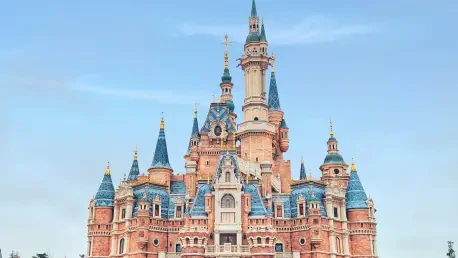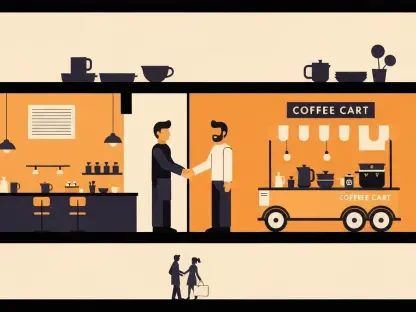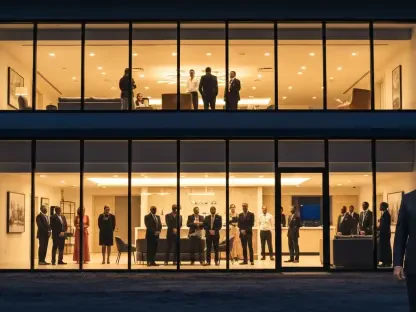Disneyland has long been synonymous with enchanting family experiences, offering a magical retreat where memories are crafted amidst a tapestry of themed attractions and diverse entertainment options. However, as the park navigates the evolving landscape of guest expectations, it faces a pivotal decision—whether to embrace alcohol within its historically dry confines. This decision has sparked robust debate, reflecting a delicate balance between maintaining the park’s family-friendly ethos and adapting to contemporary visitor demands. As Disneyland opens its doors to new possibilities, both long-time fans and new visitors find themselves contemplating the implications of these changes on the park’s cherished legacy.
The Beginnings of a Cultural Shift
Breaking with Tradition
Disneyland’s history as a dry venue was a cornerstone of its commitment to family values and creating an atmosphere where visitors of all ages could enjoy a wholesome experience. This longstanding tradition began to change with the opening of Star Wars: Galaxy’s Edge in 2019, marking the park’s first foray into serving alcohol. This move was not isolated but rather indicative of wider trends in hospitality and entertainment, where diverse culinary and beverage offerings have become integral to guest satisfaction. Disneyland’s choice to introduce alcohol was a nod to these trends, aiming to enhance the guest experience while keeping pace with an industry that thrives on innovation and adaptation.
The introduction of alcohol at Disneyland symbolized a cultural shift, challenging the notion of what a family-friendly environment entails in modern times. The decision to serve alcohol was influenced not only by industry trends but also by recognition of changing visitor demographics. Disneyland caters to a broad audience, including adults who appreciate a more varied leisure experience. This evolution underscores a broader societal change where the traditional lines defining family entertainment are increasingly blurred, allowing for more inclusive interpretations. As Disneyland embraces this evolution, it endeavors to preserve its core values while meeting the diverse interests of its guests.
Balancing Tradition and Modernity
Navigating the fine line between tradition and modernity, Disneyland faces the challenge of maintaining its revered family-oriented atmosphere while responding to the evolving preferences of its visitors. The park has sought to achieve this balance by deploying a thoughtful integration of alcohol offerings that align with its established ethos. The recent introduction of new cocktails, such as the Fresh Pineapple Cocktail and Tiki Margarita, exemplifies this approach. These beverages, crafted with care, provide more than just refreshment; they offer a sensory experience that complements Disneyland’s thematic charm, ensuring that the park remains vibrant and relevant.
The integration of alcohol into Disneyland’s offerings is not merely about expanding beverage options but about enhancing the overall guest experience. By carefully curating these selections, Disneyland demonstrates its commitment to providing quality experiences that resonate with its visitors. This approach ensures that the introduction of alcohol does not overshadow the park’s traditional appeal but rather enriches the diversity of experiences available. The presence of these new offerings indicates Disneyland’s ability to blend modern expectations with its timeless appeal, striking a balance that both honors its legacy and embraces the new dynamics of entertainment.
A Broader Debate
Embracing Modern Visitor Demands
As Disneyland continues its journey of transformation, it encounters a new generation of guests whose expectations shape the modern visitor experience. This demographic shift has inspired the park to broaden its offerings, including diverse culinary and beverage options that cater to a wide range of tastes. These changes reflect a broader effort to enhance guest satisfaction by providing engaging experiences that accommodate different interests. The inclusion of more adult-oriented leisure activities within the park acknowledges the evolving nature of visitor dynamics, where a single-day visit involves a myriad of experiences that go beyond traditional attractions.
The latest additions to Disneyland’s menu aim to align with visitor expectations, demonstrating the park’s responsiveness to consumer demand. This evolution is welcomed by those who see Disneyland as a place where both nostalgic charm and new adventures coexist. By expanding its offerings to include more varied gastronomic experiences, Disneyland reaffirms its commitment to providing a multifaceted experience that caters to every age group. This strategy not only appeals to traditional family outings but also invites adults seeking a sophisticated and comprehensive leisure outing, thus widening its appeal in an ever-competitive entertainment market.
Concerns and Criticisms
Despite the enthusiasm surrounding Disneyland’s embrace of new offerings, not all reactions have been positive. Traditionalists express concerns that the introduction of alcohol could dilute Disneyland’s image as a quintessential family destination. These critics fear that alcohol could erode the wholesome environment that has defined the park for decades, leaving behind the innocence that once epitomized a visit to Disneyland. The debate highlights a cultural tension, where preserving nostalgia and tradition is weighed against the need to innovate and remain current in a rapidly changing world.
In contrast, advocates for change argue that these evolving offerings enrich the Disneyland experience, bringing it into alignment with the tastes of a modern audience. They see these changes as a necessary evolution, ensuring that Disneyland remains relevant and appealing across generations. This faction believes that integrating more diverse options enhances the park’s allure, creating a more inclusive and dynamic destination. As this debate unfolds, Disneyland finds itself at the confluence of innovation and heritage, seeking ways to forge a path that honors its storied past while embracing the possibilities of the future.
Comparisons Within the Disney Legacy
Disneyland vs. Walt Disney World
A comparative analysis within the Disney legacy highlights interesting variances in how different locations approach their beverage policies. Disneyland’s prudent adoption of alcohol contrasts with Walt Disney World’s more liberal stance, where alcohol has long been integrated into the guest experience. This difference provides visitors with distinct experiences, showcasing how different elements of the Disney brand cater to different audiences. While Disneyland focuses on a family-centered approach, Walt Disney World embraces a broader demographic, offering a more extensive range of adult-oriented experiences.
These divergent strategies underscore the nuances in each park’s target audience and offerings. Disneyland emphasizes preserving its historically family-friendly identity while carefully diversifying its options. In contrast, Walt Disney World’s inclusive approach caters to a more diverse crowd, reflecting regional and cultural differences in audience expectations. The distinct philosophies of each park offer visitors unique experiences under the Disney umbrella, reinforcing the broader Disney brand’s adaptability and capacity to serve varied interests while delivering on its promise of enchantment and adventure.
Ensuring Inclusivity
Disneyland has long been synonymous with creating magical, family-friendly experiences, offering an enchanting escape filled with themed attractions and a variety of entertainment options. As the park evolves to meet the changing expectations of its guests, it now faces a significant decision: whether to allow alcohol sales in its traditionally dry areas. This choice has ignited a lively debate, highlighting the challenge of balancing the park’s family-oriented values with the needs of modern visitors. The potential introduction of alcohol could cater to adult guests looking for a more rounded experience, aligning with trends in other theme parks. However, this move raises questions about whether it might alter Disneyland’s carefully curated atmosphere, which many families cherish. As Disneyland explores this new direction, both devoted followers and fresh faces ponder the effects of these changes on the park’s esteemed heritage. The decision could reflect a broader shift in how Disneyland adapts to contemporary visitor demands while preserving its unique charm.









